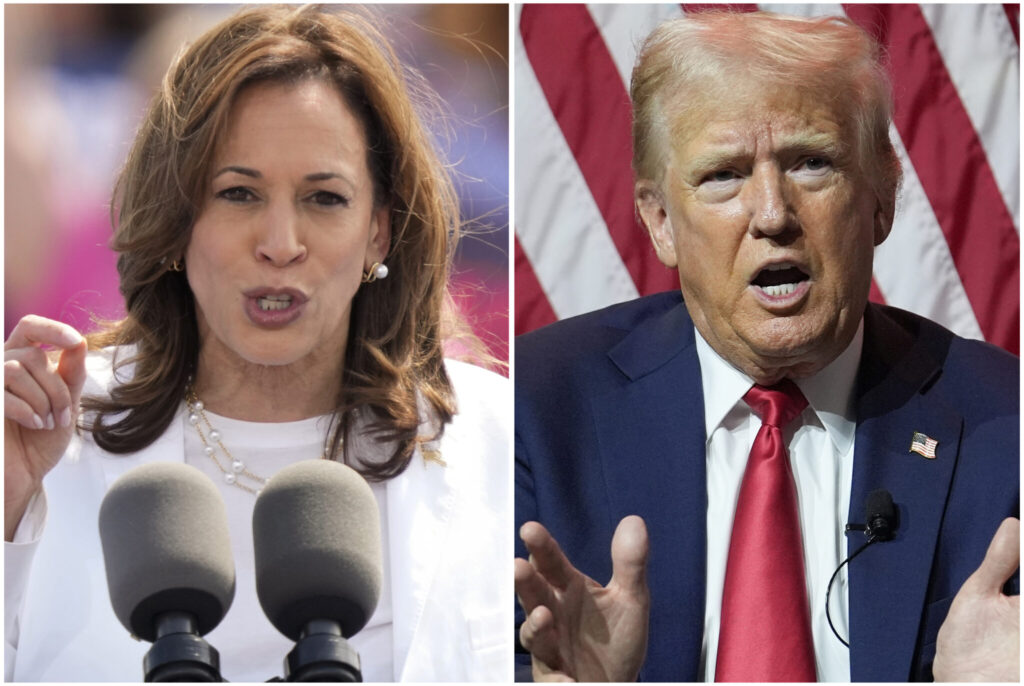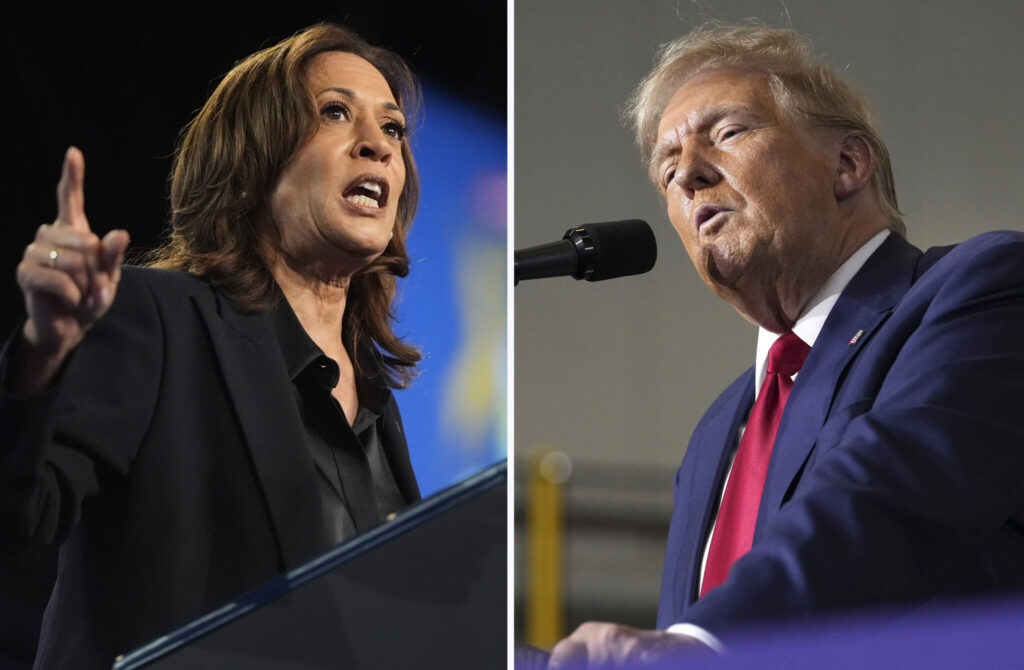U.S. national debt/ Kamala Harris/ Donald Trump/ 2024 election/ fiscal policy/ Committee for a Responsible Federal Budget/ Newslooks/ WASHINGTON/ J. Mansour/ Morning Edition/ A new analysis from the Committee for a Responsible Federal Budget projects the national debt could rise by $3.5 trillion under Kamala Harris’s proposals, while Donald Trump’s policies could add $7.5 trillion, possibly surging to $15.2 trillion. Despite different fiscal approaches, both candidates face debt challenges as campaign promises outpace revenues.

Debt Projections Under 2024 Candidates: Quick Looks
- Harris’s Plan: Adds $3.5 trillion to debt, prioritizing middle-class and housing investments.
- Trump’s Policies: Could increase debt by $7.5 trillion or even $15.2 trillion in worst-case scenarios.
- Deficit Concerns: Report warns debt would grow faster than the economy under both.
- Economic Impact: Rising debt driven by social programs, health care, and defense spending.
- Fiscal Responsibility: Other analyses align with Harris’s fiscal caution compared to Trump.
Debt Projections: Harris May Add $3.5 Trillion, Trump Could Add $7.5 Trillion
Deep Look
The U.S. national debt could see significant growth regardless of who wins the upcoming election, according to a report released Monday by the nonpartisan Committee for a Responsible Federal Budget (CRFB). The report estimates that Vice President Kamala Harris’s policy proposals would add around $3.5 trillion to the debt over the next decade, while former President Donald Trump’s plans could increase the debt by $7.5 trillion, potentially ballooning to $15.2 trillion in a high-cost scenario.
Harris’s platform includes investments in housing and the middle class, which her campaign says would be financed by increasing taxes on corporations and high-income earners. However, the CRFB analysis suggests that the projected tax revenue might fall short of covering these initiatives and the additional interest costs, potentially contributing to a $3.5 trillion debt increase by 2035.
Trump’s proposed economic policies would have a more substantial impact, with the CRFB projecting an initial debt increase of $7.5 trillion. His plans include extensive tax cuts and additional expenditures on security and immigration enforcement. Trump argues that his policies would generate economic growth strong enough to offset the deficit, but the analysis projects that even optimistic revenue assumptions might not fully cover these costs.
Harris’s Fiscal Approach
Harris’s campaign asserts that her policies prioritize middle-class support and fiscal responsibility. Her platform suggests that increased corporate taxes and higher tax rates for the wealthiest Americans would fund new initiatives without expanding the deficit. However, CRFB’s report indicates that the revenue from these higher taxes would likely fall short of covering the full scope of Harris’s plans, leaving a $3.5 trillion gap over ten years.
The report also explored scenarios in which Harris’s initiatives could add as much as $8.1 trillion in new debt if certain cost assumptions prove higher than anticipated. However, the report notes that Harris’s policies might also have a neutral impact on debt levels in a best-case scenario, depending on the degree of revenue generated from tax changes and overall economic growth.
Trump’s Proposed Debt Surge
In contrast, Trump’s policies pose a far greater risk of increasing the national debt. The CRFB estimates that his proposed tariff revenue of $2.7 trillion would be insufficient to cover the expenses tied to tax cuts, which total around $9.2 trillion. Trump’s campaign plan includes substantial border security spending and a $350 billion investment in immigration control, adding to the total cost.
Should Trump’s revenue expectations not materialize, and if the costs of his immigration policies exceed projections, the debt could surge by $15.2 trillion. While Trump has promoted his policies as growth-inducing, the CRFB report emphasizes that such growth might not balance out the steep costs.
Broader Fiscal Outlook and National Debt Concerns
Both candidates’ plans reflect a broader challenge as the federal debt, now exceeding $28 trillion, is expected to keep climbing due to ongoing expenses from Social Security, Medicare, and defense spending. As debt grows, the cost of servicing it has surpassed the federal spending on defense and healthcare, raising concerns about the impact on future budgets.
Neither Harris nor Trump has highlighted deficit reduction as a major campaign issue, focusing instead on funding their respective policy goals. Yet, analysts observe that Harris’s approach aligns more closely with fiscal responsibility, aiming to offset new expenses through higher taxes on corporations and wealthier individuals. Other independent analyses, such as the Budget Lab at Yale and the Penn Wharton Budget Model, also forecast a smaller debt increase under Harris compared to Trump.
Harvard economist Jason Furman, a former Obama administration advisor, estimated that Harris’s policies could result in a deficit impact ranging between a reduction of $1.5 trillion to an increase of $1.5 trillion. Trump’s approach, meanwhile, would raise deficits by around $5 trillion in Furman’s estimation, excluding his proposed tax exemptions on overtime and state and local taxes.
Complex Fiscal Choices
The CRFB report reflects the financial challenges that the next U.S. president will face. It warns that “debt would continue to grow faster than the economy under either candidate’s plans” and notes that without meaningful deficit reduction, these fiscal choices could impact economic stability in the long term.
While Harris’s platform suggests a balanced approach, aiming to fund programs while containing the deficit, the CRFB suggests that projected revenues may still fall short of her spending goals. On the other hand, Trump’s more aggressive fiscal approach could strain the budget substantially, even in scenarios where economic growth and tariff revenues perform well.
The CRFB report underscores the importance of sustainable fiscal policy and provides insight into the potential financial outcomes associated with each candidate’s vision. While both Harris and Trump face the challenge of managing the national debt, the fiscal paths they propose reveal sharply contrasting priorities for the nation’s financial future.







